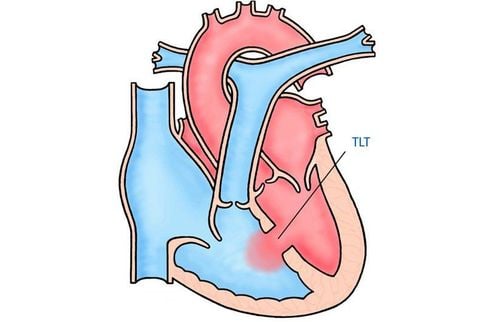This is an automatically translated article.
The article was professionally consulted by Specialist Doctor II Cao Thi Thanh - Pediatrician - Pediatrics - Neonatology Department - Vinmec Hai Phong International General Hospital. Dr. Thanh has worked for 25 years in the treatment of neonatal pediatric diseases.Microcephaly in children is one of the diseases related to neurological disorders that parents should pay special attention to. In fact, the rate of children with microcephaly is always very low, which can be classified as a rare disease. However, many parents still do not know what they need to know about this disease in order to have knowledge to prevent disease for their children.
1. What is microcephaly in children?
Microcephaly, also known as microcephaly, is a very rare neurological disorder. Infants born with the misfortune of microcephaly will have a smaller head circumference than other children of the same age and sex.As confirmed by many experts, microcephaly in newborns can occur separately - that is, occur without other serious birth defects, or conversely can also be accompanied by other major birth defects. It can happen while the baby is still in the mother's womb or within the first few years after birth.

2. What are the causes of microcephaly in children?
Ankylosing spondylitis: Between the bony plates that form the skull, there will be skull joints. In infants, if these skull joints stick together too soon, it will hinder brain development. In this case, the child needs surgery to separate the fused bones, which opens up space to allow the brain to develop properly. Severe malnutrition: The mother's poor diet is not enough to provide the necessary nutrients for the baby's development during pregnancy, which may cause microcephaly in the baby. Fetal infections: Toxoplasmosis virus infections, rubella virus, cytomegalovirus, and chickenpox are some of the infections that affect the fetus during pregnancy. Many studies say that there is enough evidence to conclude that fetal infection is the cause not only of microcephaly in babies but also lead to other brain defects in babies. Brain hypoxia during pregnancy: The amount of oxygen supplied to the brain can be reduced due to some complications of pregnancy or labor, directly affecting the development of the baby. Chromosomal abnormalities: Defects in genes are directly linked to early brain development. Accordingly, children with Down syndrome and genetic disorders are often at risk of microcephaly. Phenylketonuria (PKU) in the mother In addition, microcephaly in children also originates from causes such as:
Brain damage after birth; Defect of the brain or spine; Neonatal stroke or hemorrhage ; Disruption of blood supply during fetal brain development. See also: Causes of microcephaly in babies

3. Signs to recognize microcephaly in children
In the mildest case, the size of the baby's head will only be smaller but not associated with any other problems. The head will still grow as the child grows, however, the size will still be smaller than normal children of the same age.It also exists that the child's intelligence will be affected, leading to learning difficulties that the child will have when he or she grows up, but will not be too severe.
Other symptoms of microcephaly in children include:
Balance and coordination Impaired Hearing Development delay (delayed learning to sit, stand, walk) Difficulty eating and drinking Problems Visual problems Convulsions Poor growth Language ability Hyperactivity (poor attention or inability to sit still).

4. Effective treatment of microcephaly in children
To this day, world medicine has not found a definitive cure for microcephaly in children. If the child is unlucky enough to have it, microcephaly will follow the child for the rest of his life. The disease is divided from mild to severe, whereby each level of disease will have different treatment directions.For children with mild microcephaly, except for having a small head circumference, they do not face any problems, parents should take the child for regular health check-ups to monitor growth and develope. For children with a severe degree, the doctor will intervene to help control the symptoms that this microcephaly causes, ensuring the child's quality of life is improved.
Early intervention and treatment of microcephaly will help improve and maximize children's physical and intellectual abilities. Speech therapy, physical therapy, and occupational therapy are needed if the child has symptoms such as impaired speech, poor balance and coordination. Drug treatment is also essential to control seizures or seizures and avoid life-threatening situations in the child.
Microcephaly in children is an extremely dangerous neurological disease, greatly affecting the future life of children. If the baby has microcephaly syndrome, parents should take the child to a reputable medical facility with doctors specialized in the treatment of birth defects to get the best treatment results.

If there is a need for examination and treatment of microcephaly in children, please book an appointment directly at the website or contact the hotline for service.
Please dial HOTLINE for more information or register for an appointment HERE. Download MyVinmec app to make appointments faster and to manage your bookings easily.














